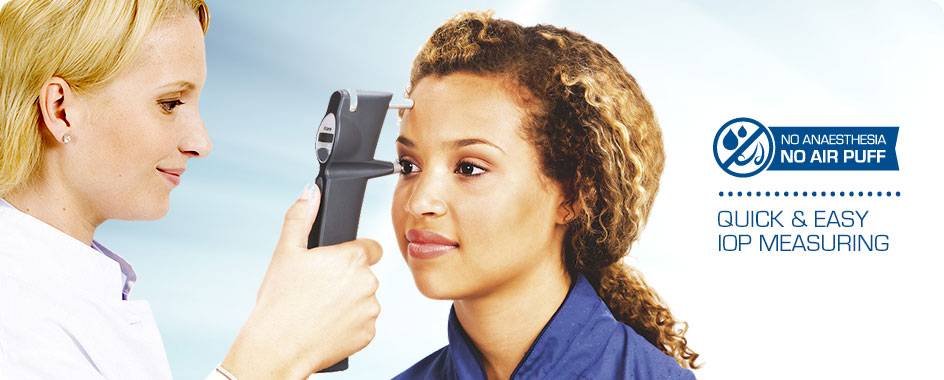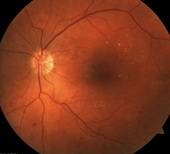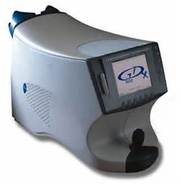iCare Tonometer

iCare Tonometers for easy, accurate and patient-friendly intra-ocular pressure measurement.
iCare tonometers are based on unique, patented rebound technology, in which a very light and small probe is used to make a momentary contact with the cornea. No specialized skills for its use the quick and painless measurement is barely noticed by the patient and and any anesthesia or inconvenient air puffs are not needed at all.Icare technology has been proven accurate and reliable by several clinical studies which demonstrates the same accuracy and uncompromised reliability in its measurements as the Golden standard i.e. complies to ISO 8612 tonometer standard, and better results than other hand-held tonometers presently on the market.Never before has intra-ocular pressure (IOP) measuring been this easy – and still accurate
OPTOS Retinal Exam
Annual eye exams are vital to maintaining your vision and overall health. We offer the optomap® Retinal Exam as an important part of our eye exams. The optomap® Retinal Exam produces an image that is as unique as you fingerprint and provides us with a wide view to look at the health of your retina. The retina is the part of your eye that captures the image of what you are looking at, similar to film in a camera.
Many eye problems can develop without you knowing. You may not even notice any change in your sight. But, diseases such as macular degeneration, glaucoma, retinal tears or detachments, and other health problems such as diabetes and high blood pressure can be seen with a thorough exam of the retina.
An optomap® Retinal Exam provides:
- A scan to show a healthy eye or detect disease.
- A view of the retina, giving your doctor a more detailed view than he/she can get by other means.
- The opportunity for you to view and discuss the optomap® image of your eye with your doctor at the time of your exam.
- A permanent record for your file, which allows us to view your images each year to look for changes.
The optomap® Retinal Exam is fast, easy, and comfortable for all ages. To have the exam, you simply look into the device one eye at a time and you will see a comfortable flash of light to let you know the image of your retina has been taken. The optomap® image is shown immediately on a computer screen so we can review it with you.
Please schedule your optomap® Retinal Exam today!
For more information on the optomap® Retinal Exam, go to the Optos website.
Digital Retinal Imaging
We use cutting-edge digital imaging technology to assess your eyes. Many eye diseases, if detected at an early stage, can be treated successfully without total loss of vision. Your retinal Images will be stored electronically. This gives the eye doctor a permanent record of the condition and state of your retina.
This is very important in assisting your Optometrist to detect and measure any changes to your retina each time you get your eyes examined, as many eye conditions, such as glaucoma, diabetic retinopathy and macular degeneration are diagnosed by detecting changes over time.
The advantages of digital imaging include:
- Quick, safe, non-invasive and painless
- Provides detailed images of your retina and sub-surface of your eyes
- Provides instant, direct imaging of the form and structure of eye tissue
- Image resolution is extremely high quality
- Uses eye-safe near-infra-red light
- No patient prep required
Digital Retinal Imaging
Digital Retinal Imaging allows your eye doctor to evaluate the health of the back of your eye, the retina. It is critical to confirm the health of the retina, optic nerve and other retinal structures. The digital camera snaps a high-resolution digital picture of your retina. This picture clearly shows the health of your eyes and is used as a baseline to track any changes in your eyes in future eye examinations.
Fundus Photography
 Fundus photography is the creation of a photograph of the interior surface of the eye, including the retina, optic disc, macula, and posterior pole.
Fundus photography is the creation of a photograph of the interior surface of the eye, including the retina, optic disc, macula, and posterior pole.
Fundus photography is used by optometrists, ophthalmologists, and trained medical professionals for monitoring progression of a disease or diagnosis of a disease.
Nerve Fiber Analysis
 Glaucoma is a slowly progressing disease that has no symptoms or visual changes until more than half of the nerve tissue in your retina is destroyed.
Glaucoma is a slowly progressing disease that has no symptoms or visual changes until more than half of the nerve tissue in your retina is destroyed.
Even with other current technology, it is difficult to see early damage from glaucoma. The GDx scanning laser ophthalmoscope measures the thickness of the retinal nerve fiber layer, which is the very first part of your eye that is damaged by glaucoma.
This allows us to detect the presence of glaucoma up to 6 years earlier than other technology, so that we can begin treating your eyes before any nerve damage is done, and before any vision is lost.
Visual Field Testing
A visual field test measures the range of your peripheral or “side” vision to assess whether you have any blind spots (scotomas), peripheral vision loss or visual field abnormalities. It is a straightforward and painless test that does not involve eye drops but does involve the patient's ability to understand and follow instructions.
An initial visual field screening can be carried out by the optometrist by asking you to keep your gaze fixed on a central object, covering one eye and having you describe what you see at the periphery of your field of view. For a more comprehensive assessment, special equipment might be used to test your visual field. In one such test, you place your chin on a chin rest and look ahead. Lights are flashed on, and you have to press a button whenever you see the light. The lights are bright or dim at different stages of the test. Some of the flashes are purely to check you are concentrating. Each eye is tested separately and the entire test takes 15-45 minutes. These machines can create a computerized map out your visual field to identify if and where you have any deficiencies.
